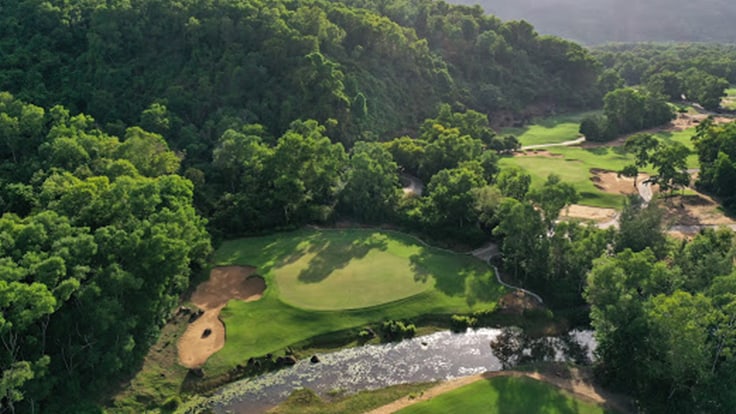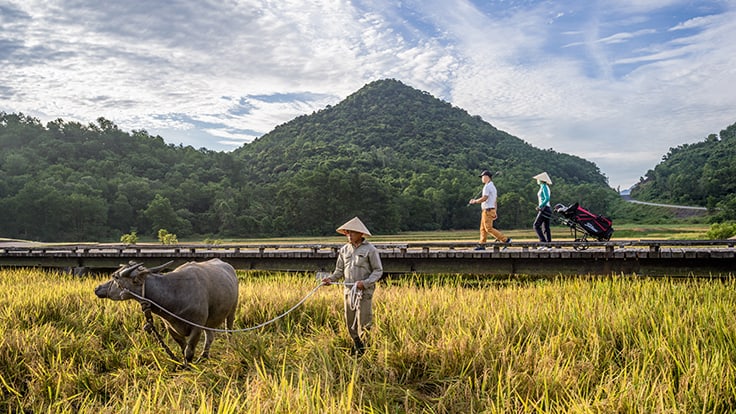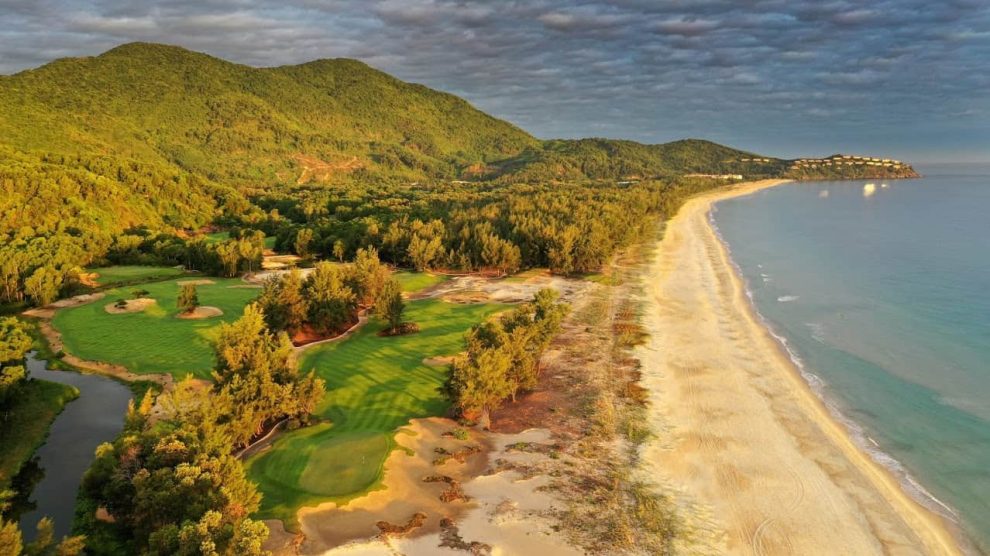By Duncan Forgan
When you meet Adam Calver, it’s impossible to miss his naturally sunny disposition. Talking ten to the dozen, the director of golf at Laguna Golf Lăng Cô, a Sir Nick Faldo design ranked among the best tracks in Vietnam, will wax lyrical on any number of subjects related to the Royal and Ancient Game.
Favorite topics include his rapport with Sir Nick, his stints at superstar clubs such as Cabot Links & Cabot Cliffs in Nova Scotia, Nirwana Bali Golf Club and Jumeirah Golf Estates in Dubai and — a matter particularly close to his heart right now — his efforts to make Laguna Golf Lăng Cô one of the more sustainable golf courses in Asia.
Dark thoughts aren’t part of the Canadian’s makeup. Nevertheless, a flicker of angst flashes across his face as he recalls the repair job that awaited him when he was brought to this corner of Southeast Asia in 2017 and asked to turn the fortunes of the course.
“Turning a golf course around once it has declined can take years,” he remembers with a shake of his head. “And we had a lot of pre-existing problems to contend with.”
When Laguna Golf Lăng Cô was inaugurated back in 2013, it immediately captured the imagination of the wider golfing public. Faldo’s impressive design ranks as one of his finest, with a links-style out-and-back routing, a variety of tees for all levels and numerous stellar holes making it a hit with low and high handicappers alike.
It can also make a strong claim to being Asia’s most beautiful course. The layout is sandwiched between emerald rainforest and the azure East Sea, and holes weave their way between trees, over rice paddies and streams and alongside the beach.
Unfortunately, a range of factors and challenges contributed to a steep decline in playing conditions that, by the time of Calver’s arrival, had left the club’s reputation badly tarnished.
Various oversights and maintenance shortcomings took their toll over the years. Fairways had become rutted and damaged by heavy cart traffic and a lack of cart paths.
A combination of failing or insufficient drainage, poor sunlight exposure and restricted airflow, meanwhile, resulted in the course becoming unplayable during and after heavy rain — a frequent occurrence in Central Vietnam, which encounters cool, wet winters where temperatures can sink below 60 degrees in the evenings.
Matters came to a head in early 2017 following a particularly harsh winter. Low temperatures and higher than average rainfall resulted in the severe loss of turfgrass on 12 of the greens. Several tees were also lacking turfgrass.
“The product was no longer worth the fees,” remembers Calver. “The course was losing its reputation and cancellations were mounting. It was decision time for the owners. Carry on and manage a decline, or recalibrate?”
Thankfully, the owners of the club — which is part of Laguna Lăng Cô, an expansive integrated resort that also encompasses the award-winning luxury resorts Banyan Tree Lăng Cô and Angsana Lăng Cô, and Laguna Park Town Homes, as well as exclusive Banyan Tree-branded residences — opted for the second call.

Calver was appointed and immediately set to work on his rescue mission. The first order of business in early March 2017 was a complete replant on the 12 damaged greens. Limiting afternoon play, the maintenance team hand-planted the surfaces.
With an aggressive grow-in program actioned for the next 90 days, the greens were in tournament condition by late June.
Replanting the damaged greens was only part of the battle. A proactive agronomic program was required to address challenges posed by poor green construction, constricted airflow as a result of thick foliage and trees, and surface drainage issues.
Amazingly, Calver found that eight of the greens had blocked or collapsed pipes, making severe waterlogging inevitable. The crew resurfaced greens and collars to ensure they could handle moderate rain events. A tree management program was implemented to identify which trees were negatively affecting airflow. Vegetation around the green complexes was removed, allowing the putting surfaces to better manage disease pressure.
Not only is the course playing much better, but it also looks fantastic. Calver thinned out the trees at the 9th hole, which plays alongside the ocean, giving golfers a grandstand view of the beach and the water.
Other innovations include the introduction of a family of water buffalo who act as “bio-mowers” and tend to the 10 hectares of rice fields located right in the middle of the course by eating excess weeds and crops that would otherwise require machinery and manpower to maintain.

The utilization of water buffalo as greenkeepers is part of a wider push by Laguna Golf Lăng Cô to be the most sustainable course in Vietnam. It has completely eradicated the use of single-use plastics: scrapping items such as garbage bags, locker room accessories, plastic cups and straws, and replacing them with ones made from bamboo, paper, steel or natural grass.
The club is also one of only three golf courses in the world to achieve Earth Check Gold certification, a status it earned at the end of 2019.
“Vietnam is one of the most beautiful countries in the world, and we are fortunate enough to have one of its most visually stunning sites,” Calver says. “As golf is a game that works in harmony with nature, we have a responsibility to take a role in protecting the environment.”
It is to Calver’s and his team’s credit that his club is in good enough shape to help lead this commendable charge.
Duncan Forgan was raised in the Kingdom of Fife, a few lusty tee shots from St. Andrews. A longtime features writer the national newspapers in Scotland and an editor of travel guides in the Middle East, he is now based in Bangkok. He covers travel, golf, culture, food and other stories around Asia, where he discovers new street food and drives his motorbike to remote parts of the region.
All photos courtesy of Laguna Golf Lăng Cô.
The article "Back from the brink, in Vietnam - Golf Course Industry" was originally published on https://www.golfcourseindustry.com/laguna-golf-lang-co-vietnam-nick-faldo.aspx





